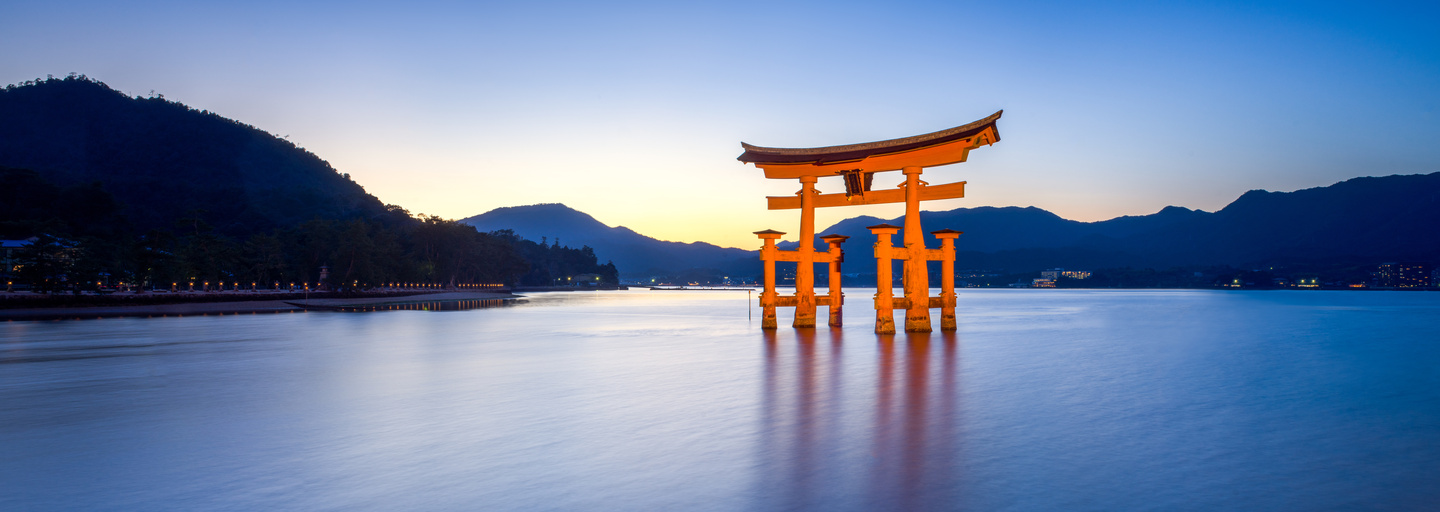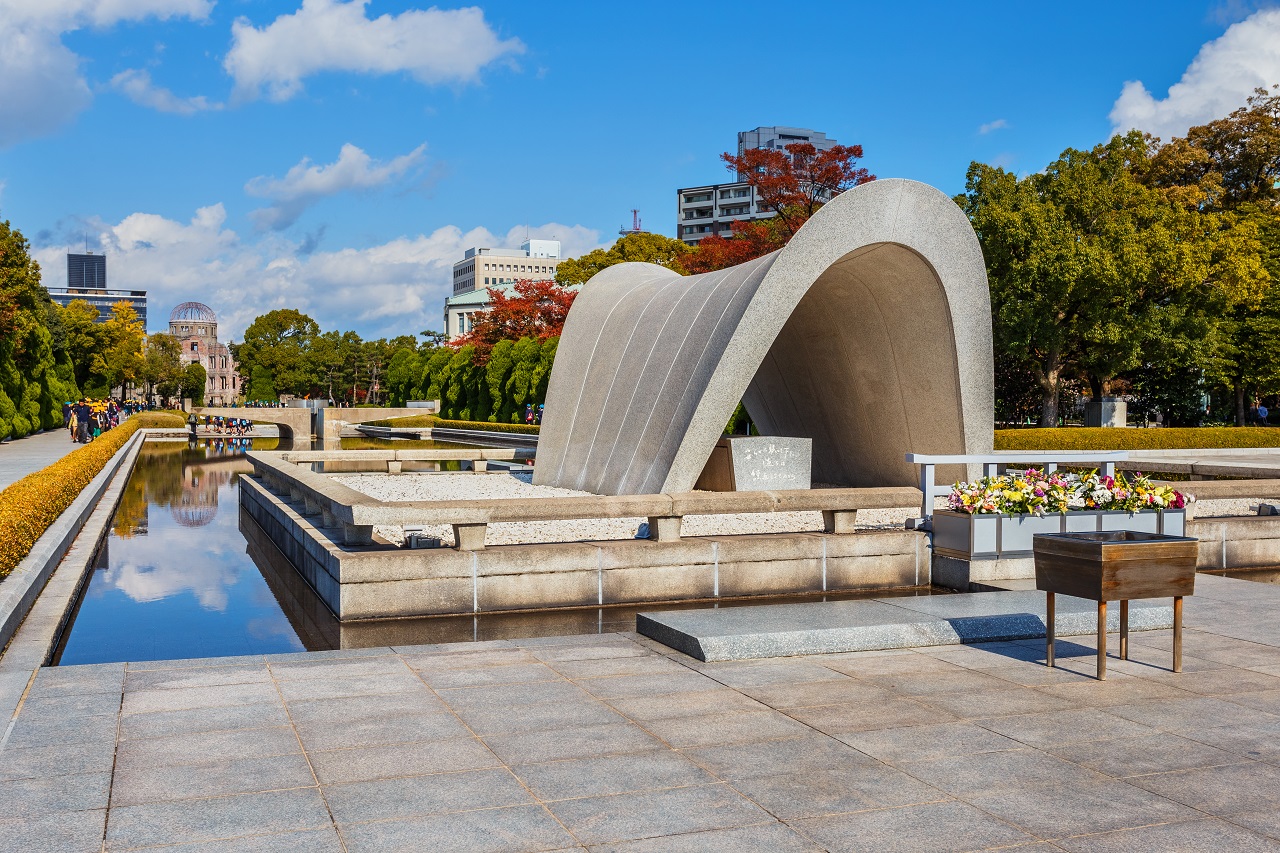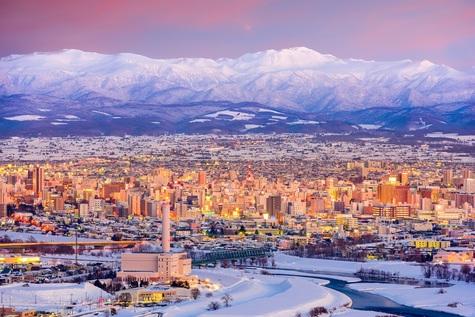
Hiroshima destination guide
Hiroshima travel guide - What to do, see and visit in Hiroshima
Table of contents:
Introduction to Hiroshima

In a bid to put an end to their fight in World War II, the United States became the first and only nation to use atomic weapons during wartime when they dropped an atomic bomb on Hiroshima and then on Nagasaki three days later. The atomic bomb dropped on Hiroshima destroyed two thirds of the city's buildings in an instant, blinding flash of light. The devastation was unlike anything the world had ever seen before. It caused an estimated 140,000 deaths by the end of 1945, most of whom were civilians. Decades later, the radiation exposure has caused increased cancer rates in the survivors, with a sharp increase in leukaemia prevailing around two years after the attack.
In the seventy-plus years since the devastation, Hiroshima has taken extraordinary measures to rebuild the city from scratch. Visitors to Hiroshima are often expecting a heavy, confronting experience but instead are surprised at what a fantastic, liveable city Hiroshima has become. There’s no denying the bombing of Hiroshima was a tragic event, but the Japanese have used it as a platform to champion postwar internationalism and the need for peace. In 1949, it was decided that the political and commercial heart of the city which was completely flattened would instead be rebuilt devoted to peace memorial facilities. Residents of Hiroshima have decided to keep the tragic reminder of war, the Atomic Bomb Dome, intact and in 1996 it was made a UNESCO World Heritage Site. Since the bombing, Japan has been tirelessly campaigning to eliminate the use of nuclear weapons during warfare. A visit to Hiroshima allows travellers to gain a deep insight into the deep suffering caused by war, and the true value of peace.
What to do in Hiroshima
Whether you visit Hiroshima to visit the world heritage sites, see the many famous temples and shrines or to experience the local culture and entertainment, the city has it all. This Hiroshima guide will break down the best things to do in Hiroshima. The dark legacy of the past is only one facet of what makes Hiroshima such a fantastic place to visit. With very friendly locals, picturesque scenery and to top it all off, it’s also a paradise for foodies. Unlike bigger Japanese cities, Hiroshima is not divided into different areas or districts. The city is compact, easy to walk around and has some great side-trips that can be continued after the Hiroshima highlights have been covered. The city is best enjoyed on a 1 - 2 day stop over and can be conveniently reached using the Japan Rail Pass from Kyoto or Osaka.
City Centre
Any Hiroshima visit will usually begin in the city centre. The main feature of the bustling downtown area is Hondori Street. Lined with shops and restaurants, it is an easy way from here to the Peace Park which lies about 500 metres away. With a wide range of bars, pubs and izakayas to choose from, you’ll find lots of fantastic drinking and dancing options in this area. Quite a few nightspots are located on the upper floors and require an elevator to be found, so keep looking up!

Hiroshima’s Peace Memorial park is one of the most prominent and not-to-be-missed features of the city. One of the few surviving structures left after the dropping of the atomic bomb is what is now known as the Atomic Bomb Dome. It serves to memorialize the great many lives lost in the attack whilst serving also as a beacon and symbol of peace. Take some time to wander through the grounds, which are lush and full of life. It was widely expected that nothing would grow in HIroshima ever again, and the thriving nature that can be seen today is a powerful testament of the city's resilience. A short walk away you will find the Children’s Peace Memorial, a harrowing building which commemorates the many children who died as a result of the bomb. The Peace Flame is also something that should not be missed on your Hiroshima itinerary. The flame was first lit in 1964 and has been continually burning until we live in a world without nuclear weapons. A large concrete structure known as the Memorial Cenotaph houses all of the names of the people who were killed by the bomb; the arch shape was designed to symbolize the shelter for the victims' souls.
Okonomiyaki

The sweetheart of Hiroshima street food is undoubtedly Okonomiyaki. The popular pan-fried dish consists of batter and cabbage as its staple. Added on top can be anything from meat and wasabi to octopus, pork or kimchi to name just a few. Okonomi literally means “to one's liking” which gives you an idea of the creative freedom you have when choosing your perfect toppings.
Hiroshima sightseeing
The Hiroshima tourism highlights are all relatively close together and can be reached on foot or by bus or tram. Your JR Pass is also valid on the hop on hop off bus which loops past all of the main attractions and sites. There is a bus every 15 minutes and passengers can get on and off the bus at any stop.
Hiroshima travel need not end at the city borders. If you have a little extra time on your hands, the city can be a great place to base yourself from and enjoy day trips nearby.
Okonomiyakimura

Fallen head over heels in love with Japanese cuisine? Then be sure to visit Okonomiyakimura! It's here that you can find 24 different food stalls under the one roof and is the perfect place to gather with your friends around the hotplate and share a meal.
For a welcome break from the bustling city, head to Shukkeien Garden, which translates to “Shrunken-scenery- garden”. The intricate garden is a beautiful display of design with valleys, mountains and forests all represented in the landscape. Taking a stroll through the gardens makes for a lovely way to spend an hour or two.

Built between 1589 - 1599, the intimidating fortress was built on the Ota River delta as the land was easy to build on and defend. The atomic bomb completely destroyed the original structure and the tower was rebuilt in 1958. Today, it stands as a fascinating museum housing pre-modern artifacts and offers one of the finest views of the city from the top of the tower.
Hatchobori (Downtown)
Located near Hiroshima Castle and The Atomic Dome, Hatchobori is a business district where you can enjoy a wide range of shopping and lots of great restaurants. This area is well connected to most parts of the city through the Hiroshima Bus Center.
Toshogu Shrine
Toshogu is the final resting place of Tokugawa Ieyasu, the founder of the Tokugawa Shogunate that ruled Japan for over 250 years. The lavishly decorated shrine is quite unique by architecture standards in Japan. You will find gold leafs and impressive wood carvings which contrast with the usual simplistic shrines throughout the country.
Futabanosato Historical Walking Trail
If you’re searching for the perfect walking trail, then look no further! This 10km track connects historical shrines and buddhist temples. This route is perfect for anyone who is looking to combine learning more about history and culture whilst checking out a great walking trail. Plan to spend at least half a day to cover the entire route.

Anyone who loves the automotive industry will find the Mazda Museum an interesting spot to explore. Delve into the past, present and future of Mazda’s automobile manufacturing and even visit the actual assembly plant. The museum is also a great place to keep warm if Hiroshima weather decides not to play ball.
Side visits from Hiroshima
If you have taken on board all of our Hiroshima travel tips, yet have more time to explore, the good news is that Hiroshima is conveniently located so that many side expeditions can be accessed.
Miyajima Island
If there is one piece of Hiroshima travel advice you take on board, let it be this. Don’t skip Miyajima Island! Considered the ‘Island of the Gods’, this romantic, picturesque island is just an hour from Hiroshima. You’ll find the magnificent Great Torii Gate which looks to be floating at sea, free roaming deer as well as stunning views throughout the many walking paths.

Wedged between the Seto Inland Sea and towering hills, the compact but quaint town is dotted with temples, cute cafes and a long, retro shopping arcade. It is well known for its Temple Walk which connects 25 historic temples throughout the town. Any budding writers can also check out the Path of Literature, which pays homage to the famous writers and authors who called Onomichi home.

This picturesque port town offers sweeping views of the Seto Inland Sea and boasts more than 1000 years of history. The charming town began its story as a popular stop for merchants who were waiting for calm seas and today makes for a wonderful, peaceful day trip from Hiroshima.

Although Iwakuni is a relatively small city of 150,000 people, there are a few prominent sites that are worth checking out on a side trip. Situated on the delta of the Nishiki River, the Iwakuni Castle is situated on a mountainside and offers incredible scenic views. Kintai Bridge is a historical wooden arch bridge spanning across the river in a series of five arches. Iwakuni is especially popular during the cherry blossom festival, where Kikkou Park becomes a wonderful place to view the blossoms.

Known as one of Japan’s great old merchant towns, Kurashiki escaped WWII largely unscathed. The old canal meanders through the town, which is why it was dubbed as “the Venice of Japan”. If you have the time during your Hiroshima visit, Kurashiki is a great option as a day trip.

Inujima earned its name as “dog island” because of the large rock that resembles a sitting dog. The peaceful island is compact enough to be explored entirely on foot. It has recently become known for its contributions to modern art after it became part of the Setouchi Triennale, an art exhibition that features both Japanese and international artists.
Whilst the initial draw to Hiroshima may be to understand the tragic and complex atrocities that occurred during WWII, visitors will quickly discover there is far more to discover once you start exploring deeper. An impeccable example of resilience, Hiroshima and is well worth a visit to understand the history, to see ancient temples and to taste the fantastic cuisine on offer. What often is intended as just a side trip, might just turn into one of the favourite cities on your Japan itinerary.
See also

Nikko Destination Guide
Known as a centre of Shinto and Buddhist mountain worship for many centuries, Nikko National Park offers scenic, mountainous landscapes, lakes, waterfalls, hot springs, wild monkeys and hiking trails

Sapporo Destination Guide
Known as one of the youngest cities in Japan, Sapporo is most famous for its beer, ramen, crabs, skiing and the annual Sapporo Snow Festival featuring enormous ice sculptures.

Kyoto Destination Guide
Kyoto was historically the capital and cultural centre of Japan, and boasts a rich history of culture and tradition. Learn about the best things to do, see and experience in Kyoto.

Mt Fuji Destination Guide
Mt Fuji is an unmistakable symbol of Japan. More than just a pretty view, the solitary mountain contributes to Japan’s physical, cultural and spiritual geography.